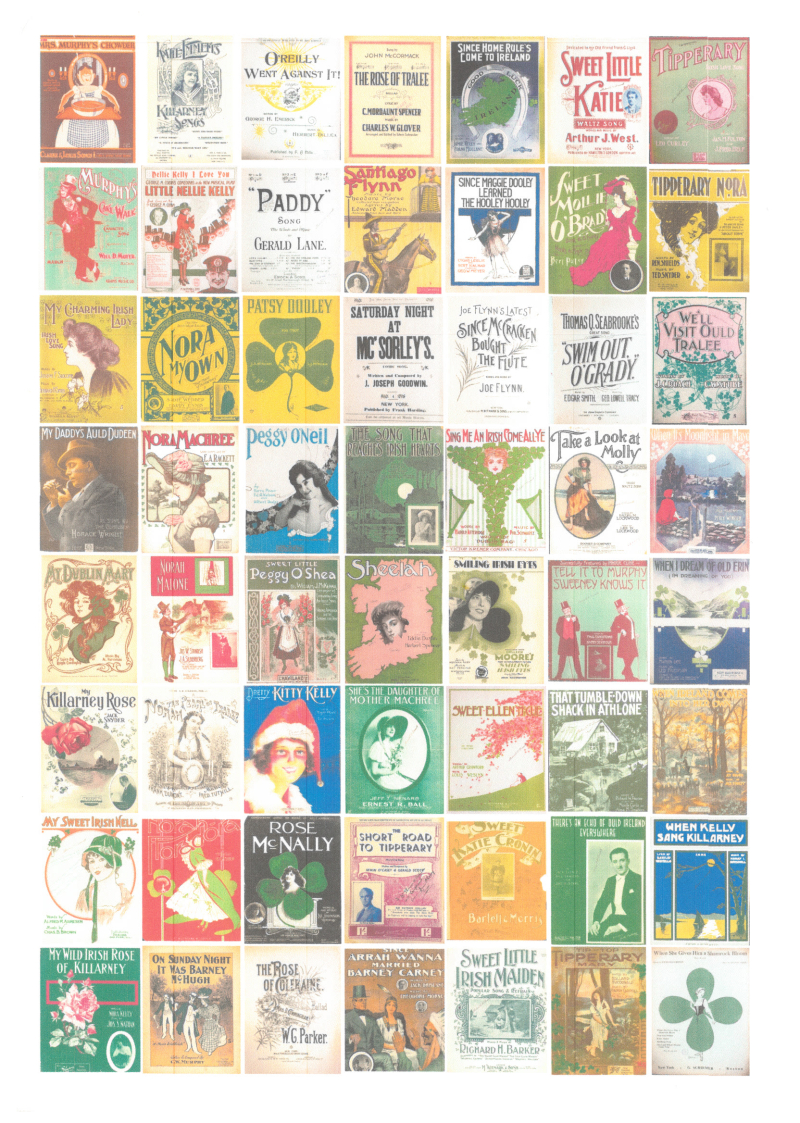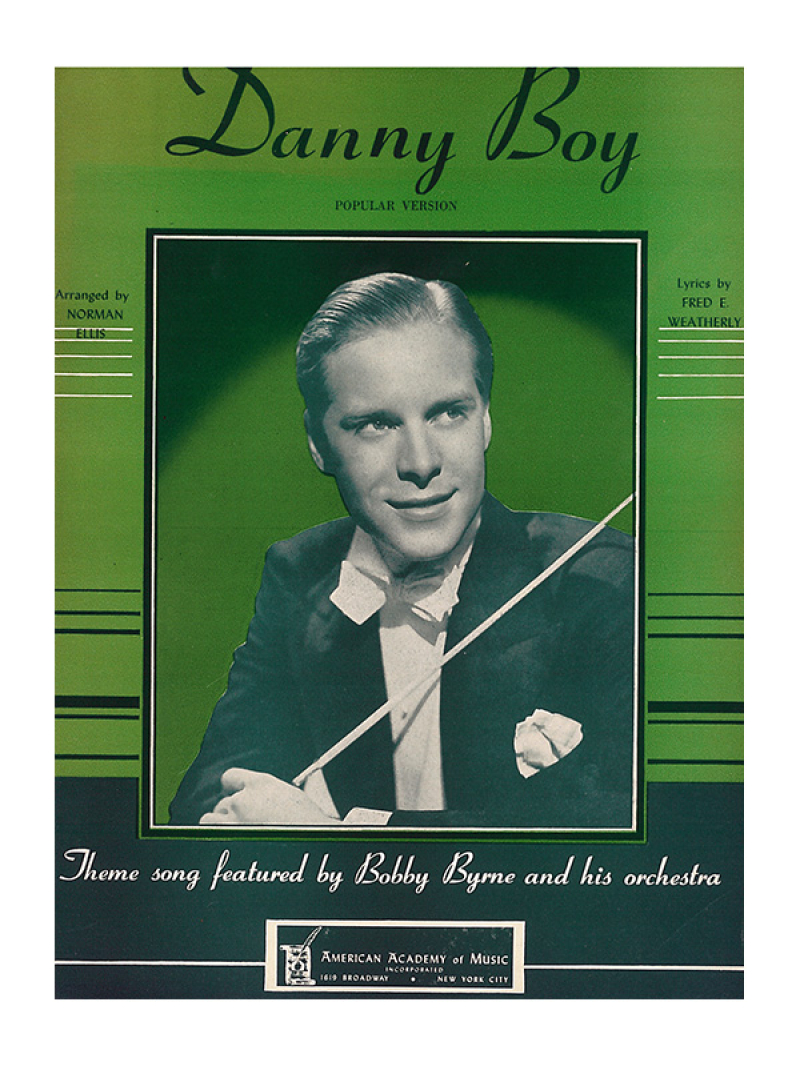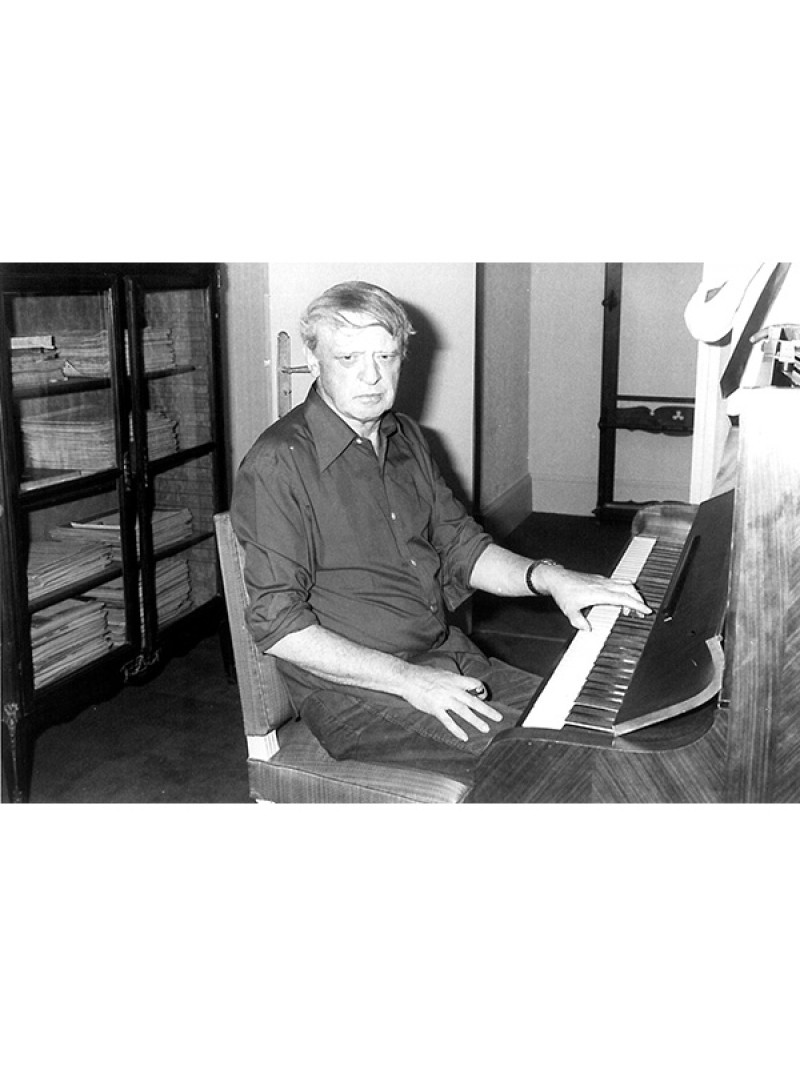
Background on the music sheet collection
In 1978, H.S.H. Princess Grace of Monaco purchased a collection of more than 1,100 unique Irish and Irish American music scores, dating from 1840 to 1970, collected by Michael E O’Donnell who worked in the music industry in Philadelphia and New York, and who originated from County Mayo like the Princess’ grandfather. This was also fitting, since Grace Kelly's uncle Walter Kelly was a famous vaudeville actor in the early 1900s and had performed this kind of material in the United States of America, which no doubt influenced her choice of acting career.
The music sheet collection was housed at the Prince’s palace until 1984, when it was moved to the building where the Princess Grace Irish Library is now located (5 minutes walk from the palace). In March 2019, some of the song sheets were selected by Dr Fintan Vallely to be used as part of the programme for the inaugural evening of Irish music at the restored Kelly House in Philadelphia, where Princess Grace grew up. During his time as The Ireland Funds Monaco Academic-in-Residence, Dr Vallely started work on cataloguing the collection. This was completed in 2021, and the catalogue listing was put online on the library's website in 2023.
"This collection is a window on to the passing traffic of Irish American music indulgence and expression over the period of a century,"
- Dr Fintan Vallely

Recordings of the music
During the academic year 2023/2024, the Princess Grace Irish Library, Académie Rainier III Musique & Théâtre, Monaco and Technological University Dublin Conservatoire collaborated to bring new artistic energy to the Princess Grace Song Sheet Collection. This collaboration develops the artistic interpretations of the song sheet collection, culminating in a cross-institution contribution to the 40th anniversary celebrations of the Princess Grace Irish Library. Musicians and students from both the TU Dublin Conservatoire and the Académie Rainier III recorded selections of repertoire for inclusion in this commemorative book. Our sincere gratitude to the following people in both musical institutions who made this happen: Dr Helen Lawlor, TU Dublin Conservatoire and Madame Jade Sapolin, Director of the Académie Rainier III Musique & Théâtre, Monaco and her staff in particular harp teacher Noelle Vera.
Listen below to the recordings!
This audio recording of Danny Boy "The Derry Air", arranged by Odhrán Ó Casaide performed by the Technological University Dublin Traditional Music Ensemble.
This audio recording of "When Its Moonlight in Mayo" is performed by students at the Académie Rainier III, Conservatoire, Principality of Monaco as part of the celebrations for the 40th anniversary of the inauguration in 1984 of the Princess Grace Irish Library. The recording appears in the commemorative book published in 2024 and presented to H.S.H. Prince Albert II of Moanco and His sister H.R.H. The Princess (Caroline) of Hanover on 20th November at the Library in tribute to Their mother Princess Grace and her attachment to Irish literature and music.
The breakdown of song titles shows that the Gaelic league and Irish Revival era poets, which were popular in Ireland, and in England, also had audiences in America. This mix is perhaps the collection’s strong point; it has Irish lyrics and settings, including those by the 20th century Irish writer James Joyce, also Alice Milligan and her sister Charlotte Million-Fox, as well as many by the 19th century Samuel Lover and Thomas Moore. There is also writing by non-Irish scribes - vaudeville - theatre comic song and nostalgic love-song from Tin Pan Alley writers, much of which was being performed contemporaneously by “big” names.
Uniqueness of the Princess Grace Sheet Music Collection
Although the collection is not a definitive archive of song-sheets, its materials are unique for the period they cover in Irish American culture history – from famine times until after World War II , the key area of development of Irish American society. Its variety is a visual inventory of the music taste or interests of different social strata of this society. It casts light on not only blue and white-collar clientele who frequented vaudeville and other venues where many of these songs were sung, but also on those who had a disposable income, stable accommodation and some classical -music taste.


Interpreting the collection
The sheets are, for the most part, printed by commercial, American music publishers – 346 of them, some large companies, some individuals. Many kinds of information can be deduced from the song lyrics, not least the over-arching feature that they show the gradual negotiation of Irish American identity by the immigrant Irish to the United States.
Though Irish in style, the songs in the collection are a step away from older, traditional Irish songwriting. The newer compositions have many of the characteristics of Irish song but embody a different set of experiences – those of the new immigrants to the United States, wherein each nationality tended to stick together and live in areas inhabited largely by its own people. These are Irish-interest songs, about people who saw themselves as, and took great comfort from being, Irish first, American second.


Elements and features of the collection
There are 1698 sheets, 599 of which are duplicates, meaning that there are 1,099 discrete song-sheets. Among the 1,099 individual song-lyrics, there are occasional duplicates in the form of different editions (51 in all), reducing the number of actual songs represented to 1048; several of these lyrics however have different music setting. Overall, 1,040 lyrics- writers are named, some of them having more than one song to their credit. The commercial music lyricists and composers of this period are generally assumed to be independent of nationality in their work. These were the “Tin Pan Alley” writers of the early 1900s who drew on various palettes of” “national” characteristics – such as metaphor, allusion, melodic principles and themes – for the express purpose of appealing to and making money from various nations’ city communities.
The Princess Grace Song-Sheet Collection is only a partial inventory of such commercial songwriting, however, for circa 10% of its material was published in England, many of those lyrics and melodies being already long established as Irish, not least on account of having been written by songwriters such as Thomas Moore (41 songs). Furthermore, at least 368 of the songs (33%) and 232 of the music compositions (21%) have surnames of Irish origin; yet, of course, many of these were writing for New York publishers.
As for gender, 172 of the lyricists of the 1099 songs (16%) were female, as were 140 (13%) of the composers. But among these, Irish women were prominent – 36 % of the female lyricists and 30% of the female composers overall have Irish names.
The songs’ content
The content of the songs tells us much too. While all of them relate to Ireland and Irishness, a quick, initial survey suggests that 360 of them (33%) deal with love, 90 (8%) with emigration and exile. Irish American society is the subject of 200 (18%) of them; there are 180 (9%) on Irishness per se, and 56 (5%) deal with Irish national political identity. Nostalgia is a feature of 18% of the songs, while a narrative structure is the dominant style in 33% of them. A comic or satirical approach is taken in 200 or more lyrics (c. 18%), all of those being on social aspects of Irish American culture, politics, work and life.
"Irishness in these songs is somewhat ridiculed, especially in the earlier period, but it is romanticised in the latter part of the song-sheets’ era."
Dr Fintan Vallely / The Princess Grace Irish-American Song-Sheet Collection Catalogue,
2020, Monaco.
Dr. Fintan Vallely is an awardwinning musician, lecturer and writer on traditional music; among his numerous books is the encyclopedia Companion to Irish Traditional Music. In 2022, he was honoured as an Adjunct Professor with University College Dublin, and in 2023 was awarded the national TG4 lifetime achievement award, Gradam Saol. In 2019, Dr. Vallely undertook the vast project of cataloguing the Princess Grace collection of 1,099 song-sheets.